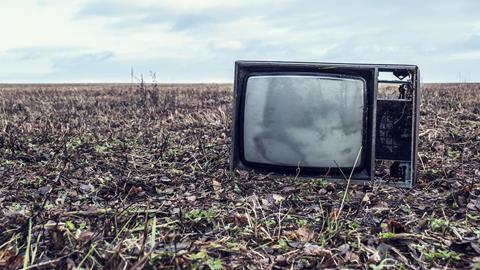The way we shoot and deliver TV and film may have changed, but despite the constant cycle of change, cinema and TV is still in good health, says John Maxwell Hobbs.
Movies are killing vaudeville, the Victrola is killing live music, radio is killing the Victrola, Video Killed the Radio Star, home taping is killing music, television is killing the cinema, the VCR is killing television, computer games are killing linear storytelling and streaming is killing television.

There’s something in the air.
Over the past couple of weeks, I’ve had several people in the industry ask me if I thought that linear television was dead.
And the conversation then went on to a discussion of the various players – streaming services, mobile operators, government treasuries – anxiously waiting to strip the corpse of its valuable content and spectrum, which would be an unfortunate turn of events if allowed to happen.
Every time a new medium comes along, people rush to proclaim that that it’s the death knell of whatever medium immediately preceded it. I’m sure the ancient bards were worried that this new-fangled “writing” thing was going to kill off the spoken word.
At the same time, people whose fortunes are tied up with the establishment are quick to dismiss the newcomer as “just a fad” and predict that people will soon come to their senses, and things will go back to the way they were.
Neither point of view is right.
Although capture and distribution formats may come and go – waxed cylinders have been replaced by streaming apps, videotape has been replaced by SD cards and DTV has replaced analogue transmission – theatre, cinema, radio, and television are all still here, and mostly in rude health. As a matter of fact, in the music business, we’re seeing the resurgence of live performance as the biggest generator of revenue.
As opposed to being fragile creatures that will succumb to any threat, these media have proved to be very resilient, undergoing mutation to find a new way to thrive in a changing ecosystem.
At any given moment in time, a medium may be engaged in activities that are very different than their inventors originally intended.
Thomas Edison intended the phonograph to be used for the recording and playback of telegraph communication – he was originally opposed to using it for music.
The two people credited with the invention of radio communications, Tesla and Marconi, never thought of their inventions as something to be used for disseminating entertainment. Tesla was trying to develop a method of communicating with Martians, and Marconi was hoping to be able to listen to the words of the dead.
Farnsworth and Baird, the pioneers of television transmission imagined that their inventions would be used primarily for educational purposes.
It’s useful to look at how both radio and cinema changed after the introduction of television.
These days, with a few exceptions like the BBC, radio is known primarily as a platform for music and call-in talk shows. In its heyday, music was only a small part of the output. There was comedy, drama, variety, news, sport, and more – in the US and the UK, there were even ventriloquists regularly presented on radio – let me say that again, ventriloquists regularly performed on the radio.

Cinema-going was a very different experience as well – a Saturday matinee was something that occupied several hours, opening with a cartoon, then a newsreel, followed by a serial like Buck Rogers or Batman, leading into the first of two films – usually a “B-grad” film followed by an “A” feature, with some sort of live event like a raffle or a bout between boxing kangaroos occurring during the break between the two films.
With the introduction of television, a lot of the material that was not perfectly suited for radio and cinema migrated over.
Serialised comedy and drama found a much better home on television because it had the visual element lacking on the radio and the daily interaction that was not possible in the cinema.
Sport was a natural fit with the ability to watch the action live. And of course, it was the perfect medium for ventriloquists.
Cinemas changed their focus to offering visually stunning, widescreen blockbusters and the cartoons, serials, and B films made their way to the telly. It’s hard to believe in this current “golden age” of television drama, but up until the 1980s, television was viewed as the domain of actors, writers, and directors who weren’t good enough for film.
As we can see from the examples above, in the words of William Gibson, “the street finds its own uses for things.”
Forms of communication and expression are never killed off, they just modify themselves to fit the current context. These changes are never planned, they are stumbled upon more often than not. As new forms arise on streaming services – chapterisation instead of serialisation, bingeing, interlocking “universes” of series – linear television will go through the same sort of reinvention experienced by radio and cinema.
It’s too soon to know what will be on the other side, but it will as interesting as it will be unexpected.
As well as being a music producer and composer, John Maxwell Hobbs is CEO of music technology startup Delic, media consultant and the former Head of Technology at BBC Scotland.




























1 Readers' comment